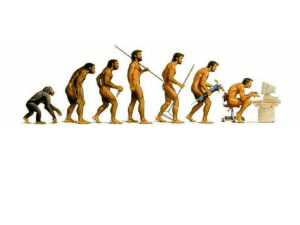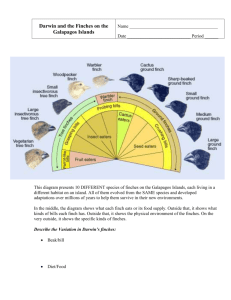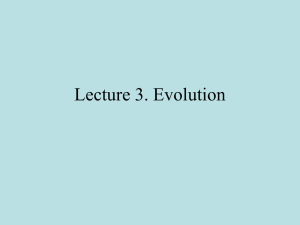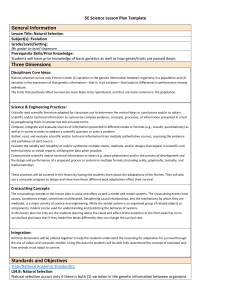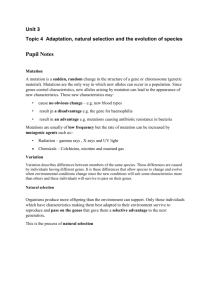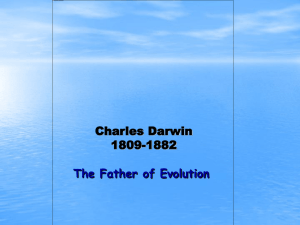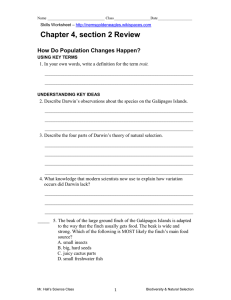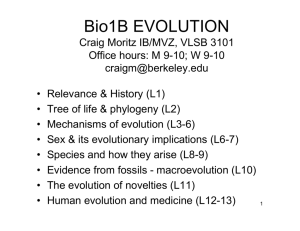Origins of Species
advertisement
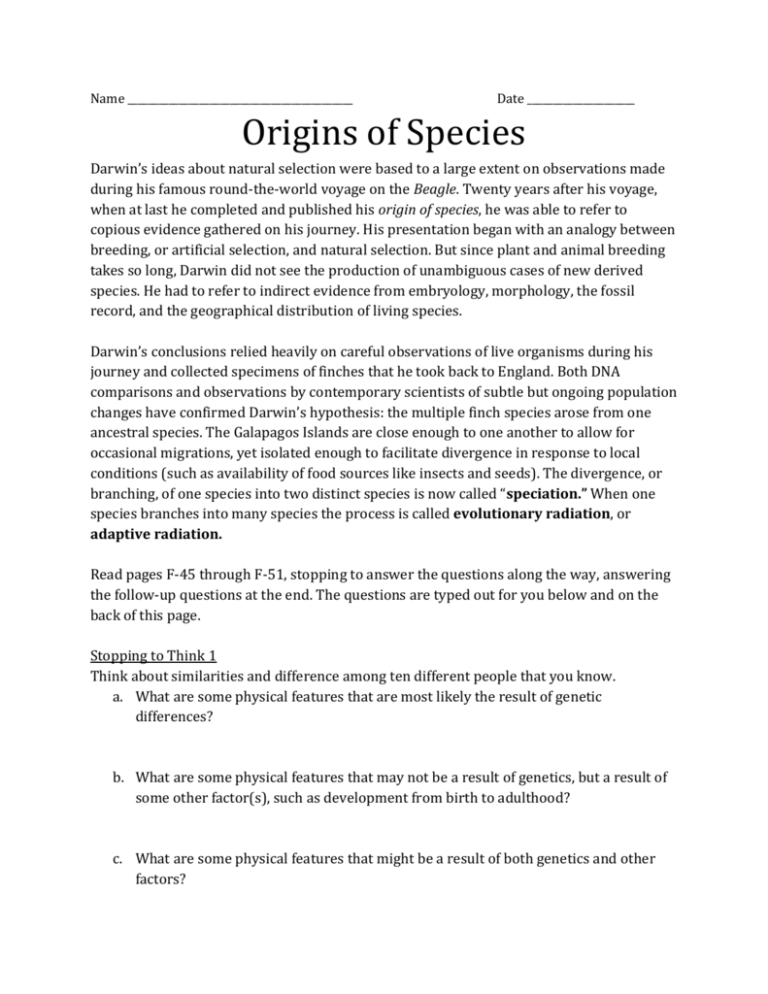
Name ____________________________________________ Date _____________________ Origins of Species Darwin’s ideas about natural selection were based to a large extent on observations made during his famous round-the-world voyage on the Beagle. Twenty years after his voyage, when at last he completed and published his origin of species, he was able to refer to copious evidence gathered on his journey. His presentation began with an analogy between breeding, or artificial selection, and natural selection. But since plant and animal breeding takes so long, Darwin did not see the production of unambiguous cases of new derived species. He had to refer to indirect evidence from embryology, morphology, the fossil record, and the geographical distribution of living species. Darwin’s conclusions relied heavily on careful observations of live organisms during his journey and collected specimens of finches that he took back to England. Both DNA comparisons and observations by contemporary scientists of subtle but ongoing population changes have confirmed Darwin’s hypothesis: the multiple finch species arose from one ancestral species. The Galapagos Islands are close enough to one another to allow for occasional migrations, yet isolated enough to facilitate divergence in response to local conditions (such as availability of food sources like insects and seeds). The divergence, or branching, of one species into two distinct species is now called “speciation.” When one species branches into many species the process is called evolutionary radiation, or adaptive radiation. Read pages F-45 through F-51, stopping to answer the questions along the way, answering the follow-up questions at the end. The questions are typed out for you below and on the back of this page. Stopping to Think 1 Think about similarities and difference among ten different people that you know. a. What are some physical features that are most likely the result of genetic differences? b. What are some physical features that may not be a result of genetics, but a result of some other factor(s), such as development from birth to adulthood? c. What are some physical features that might be a result of both genetics and other factors? Stopping to Think 2 Imagine that you own a dog that recently gave birth to a litter of puppies. Your veterinarian informs you that one of the puppies has a genetic mutation. a. Think of a mutation that the puppy could have that would be neither helpful nor harmful. b. Think of a mutation that the puppy could have that would be harmful. Stopping to Think 3 You may have heard someone who is wrapping a present say, “I wish I had another hand!” Explain why an organism cannot choose to have a mutation that would enable it to live more successfully in its environment. For example, could birds choose to have larger beaks? Explain your reasoning. Stopping to Think 4 Darwin identified 14 species of finch on the Galapagos Islands. Your friend says that this means only 14 mutations occurred within the finch populations. Explain whether you agree with your friend and why. Analysis and Follow-Up 1. Are mutations always helpful? Explain. 2. How can mutations enable the evolution of a new species to occur? Use a real life example, if possible. 3. Under ideal conditions, bacteria have a generation time of about 20 minutes. Humans have a generation time of about 20 years. Which would you expect to evolve faster? Why? 4. Assume that there was only one island. On this island lived the original finch species. All of these finches had strong, short beaks useful for crushing seeds. Today, there is another finch species on the island with a longer beak useful for eating fruits and flowers of cactus plants. What must have happened for this second species to have evolved from the first species? 5. On one side of the island there are very many cactus plants, while on the other side, there are very few. How could this environmental difference affect the evolution of these birds?

